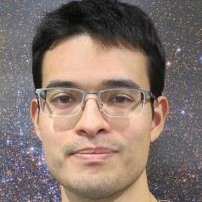Dark Matter and Dark Energy: Particle Physics, Cosmology, and Experimental Searches
A special issue of Universe (ISSN 2218-1997). This special issue belongs to the section "Cosmology".
Deadline for manuscript submissions: closed (31 December 2022) | Viewed by 37949
Special Issue Editors
Interests: cosmology; cosmic microwave background; large-scale structure; dark matter; dark energy; neutrino cosmology; modified gravity; gravitational waves; astroparticle physics; black hole physics
Interests: cosmology; CMB; dark energy; modified gravity; neutrinos
Special Issues, Collections and Topics in MDPI journals
Interests: cosmology; cosmic microwave background; large-scale structure; cosmological tensions; dark matter; dark energy; neutrino cosmology; modified gravity; cosmic inflation; gravitational waves
Interests: cosmology; dark matter; dark energy; neutrino cosmology; modified gravity; astroparticle physics; neutrino oscillations; 21-cm cosmology; cosmic inflation; particle physics
Interests: cosmology; dark matter; dark energy; astroparticle physics; particle physics; cosmic inflation; axions; gravitational waves; black hole physics; Higgs physics
Special Issues, Collections and Topics in MDPI journals
Special Issue Information
Dear Colleagues,
Thanks to a variety of astrophysical and cosmological observations, it has been established that the energy budget of the Universe is dominated by two dark components, whose origin and composition remain unknown: dark matter (DM) and dark energy (DE). One of the major tasks of cosmology, particle physics, and astrophysics in the coming years will be to unravel the nature of DM and DE both through joint and complementary efforts.
On the particle physics side, DM candidates are ubiquitous in extensions of the standard model of particle physics. However, DM has so far eluded discovery despite significant detection efforts, making it worth thinking of both alternative DM candidates, as well as novel detection methods. Moreover, the predictions of the collisionless cold DM paradigm appear to be in tension with galactic and sub-galactic structure observations (the so-called “small scale crisis”), which might be pointing towards a richer particle DM structure. From the particle physics point of view, the nature of DE is even more uncertain and no leading paradigm exists.
On the cosmological side, the ΛCDM standard cosmological model has been able to successfully explain a wide variety of observations ranging from cosmic microwave background radiation to the large-scale structure of the Universe. Yet, we know that ΛCDM cannot be the end of the story. Intriguingly, hints of cracks in the ΛCDM model have been appearing in relation to tensions between parameters determined from high- and low-redshift observations, such as the well-known Hubble constant tension. These tensions could be pointing towards a richer dark sector, especially on the DE side (for instance in the form of an early DE component, DM-DE interactions, or phase transitions in the DE).
Our goal in this Special Issue is to foster discussions to further understand the dark sector, including novel theoretical models, new detection ideas, and reviews on what the dark sector components might or might not be. We believe that a joint and complementary effort between particle physics, cosmology, and astrophysics, is vital to shedding light on the dark side of the Universe, and we, thus, especially encourage works at the interface of model building, phenomenology, and observations. Topics of interest to this Special Issue include (but are most certainly not limited to) the keywords summarized below. We welcome both original submissions and review papers, and look forward to your contributions!
Dr. Sunny VagnozziDr. Eleonora Di Valentino
Prof. Alessandro Melchiorri
Prof. Olga Mena
Dr. Luca Visinelli
Guest Editors
Manuscript Submission Information
Manuscripts should be submitted online at www.mdpi.com by registering and logging in to this website. Once you are registered, click here to go to the submission form. Manuscripts can be submitted until the deadline. All submissions that pass pre-check are peer-reviewed. Accepted papers will be published continuously in the journal (as soon as accepted) and will be listed together on the special issue website. Research articles, review articles as well as short communications are invited. For planned papers, a title and short abstract (about 100 words) can be sent to the Editorial Office for announcement on this website.
Submitted manuscripts should not have been published previously, nor be under consideration for publication elsewhere (except conference proceedings papers). All manuscripts are thoroughly refereed through a single-blind peer-review process. A guide for authors and other relevant information for submission of manuscripts is available on the Instructions for Authors page. Universe is an international peer-reviewed open access monthly journal published by MDPI.
Please visit the Instructions for Authors page before submitting a manuscript. Submitted papers should be well formatted and use good English. Authors may use MDPI's English editing service prior to publication or during author revisions.
Keywords
- Dark matter
- Dark energy
- Current and future cosmological and astrophysical observations
- Experimental searches for dark matter and dark energy
- Extensions of ΛCDM and beyond the standard model physics
- Small-scale structure problems of ΛCDM
- Cosmological tensions
- Modified gravity
- Self-interacting dark matter
- Interacting dark energy









